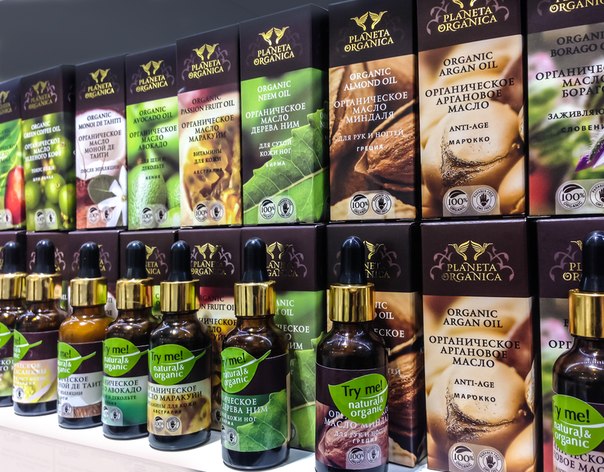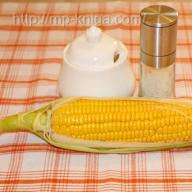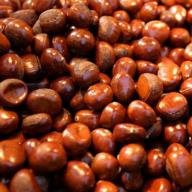Rinsing hair with vinegar has been an effective hair care method since ancient times.
This method is still relevant today; it allows you to give your hair a radiant shine, counteract the appearance of unwanted odors, normalize the fat balance, neutralize alkalis, get rid of unwanted color and perform a number of other useful tasks.
Among the components that make up natural mouthwashes, vinegar takes pride of place.
Only herbal decoctions or solutions containing freshly squeezed lemon juice can compare with it.
This product contains a significant amount of acetic acid. It is made from natural raw materials, including alcohol.
The process is realized through microbiological synthesis through the activity of special bacteria.
The sour, very specific smell of vinegar is familiar to all culinary enthusiasts.
For the purpose of cooking, a product containing from 3 to 15% acetic acid is used. For cosmetic purposes, natural vinegar of the same concentration is used.
Edible vinegar is a completely natural product, as it is made from fruit raw materials, wine materials, whey, malt and other natural ingredients.
An interesting fact is that vinegar, in retrospect, is akin to wine. Scientists claim that five thousand years ago in Babylon vinegar was produced from the processing of dates.
This product does not currently belong to the “exotic” category.
The range of uses of vinegar is very wide: it is used in cooking, canning, in the production of detergents and cleaning products, in the production of mayonnaise and sauces, in pharmaceuticals, in crop production, in the treatment of various diseases and in other fields of activity.
The properties of vinegar have not gone unnoticed in the cosmetics industry.
Such attention is quite justified, because many thousands of years ago women used the product to improve the quality of their hair.
As part of mouthwashes, vinegar can:
- tone the skin;
- effectively clean the structure;
- neutralize the effects of alkalis;
- counteract unwanted odors and dandruff;
- stimulate the appearance of shine;
- act as an analgesic and blood circulation stimulant.
Also, the use of vinegar in cosmetics counteracts the appearance of fungal diseases, promotes wound healing and normalizes fat balance.
Reviews from women indicate that the optimal proportion in a vinegar rinse is: 1-2 tbsp. l. product per 1 liter of water.
However, the concentration may vary depending on the goals. For example, if it is necessary to “wash off” the shade after using a tonic, then a solution in a concentration of 1:5 is needed.
This increased acidity is due to the fact that baking soda is usually used to correct color, and a particularly acidic solution is needed to intensify the reaction.
You should also take into account reviews from women regarding neutralizing the effects of hard water.
Rinsing with a vinegar solution is the only reliable way to get rid of the negative effects of tap water on your hair.
Many women prefer to make a vinegar rinse based on mineral water.
It is also an interesting fact that vinegar helps restore keratin and has a positive effect on the condition of the surface layer of hair as a whole.
The result of using a vinegar solution is hair that is easy to style, silky strands, surprising with shine and a healthy appearance.
Rinsing your hair with vinegar will be especially useful for those with oily hair, as the product very effectively normalizes the activity of the sebaceous glands.
When styling, hair is more manageable after using a vinegar rinse.
Despite the fact that the strands look crumbly, they can be easily modeled into pronounced curls.
If your hair feels too silky, you can use a natural leave-in conditioner after rinsing.
For example, a recipe for a homemade conditioner: you need to mix jojoba oil with water (or herbal decoction) in a ratio of 1:5 and spray it on your hair using a spray bottle.
Vinegar Rinse Recipes
You can enhance the effect of vinegar on your hair by adding other active ingredients.
For example, you can use the following recipe: steam 50 g of bay leaf in boiling water and add 1-2 tbsp. l. vinegar. Laurel stimulates growth, and vinegar creates the necessary environment for this.
Also, vinegar can have an even more positive effect on hair if parsley, chamomile, dill, black or green tea, thyme, nettle and other herbs or plants are included in the rinse recipe.
A recipe that suggests combining vinegar with lemon is nonsense.
The proportions of vinegar in relation to the part of water should be established experimentally, because all people and their hair have individual characteristics.
However, reviews from women indicate that it is necessary to adhere to the average ratio: 1 tbsp. l. product per 1 liter of water.
The proportions may vary depending on the type of hair: for dry hair it is recommended to use less acidic solutions, for oily hair – with a higher concentration.

There is an opinion that the smell of vinegar lingers for a long time. In reality, it only appears on wet hair; when dry, it is almost invisible.
To give the vinegar-water solution a pleasant smell, you can add a few drops of essential oil.
When using a hair dryer after rinsing with vinegar, it is advisable to use a cool air stream.
Vinegar promotes shine and can highlight hair color.
To enhance this effect, dark-haired women can add rosemary to the water-vinegar rinse, and blondes can add chamomile.
Adding herbal decoctions increases the value of the rinse, since hair can be treated at the same time.
For example, burdock, nettle, and sage help strengthen hair follicles and thus counteract hair loss. Nettle can also get rid of dandruff and excess fat.
Vinegar is one of the most effective remedies against hair loss. It is part of many masks and compresses designed to solve this problem.
There are also recipes for rinses that are used along with medicinal masks that include vinegar.




